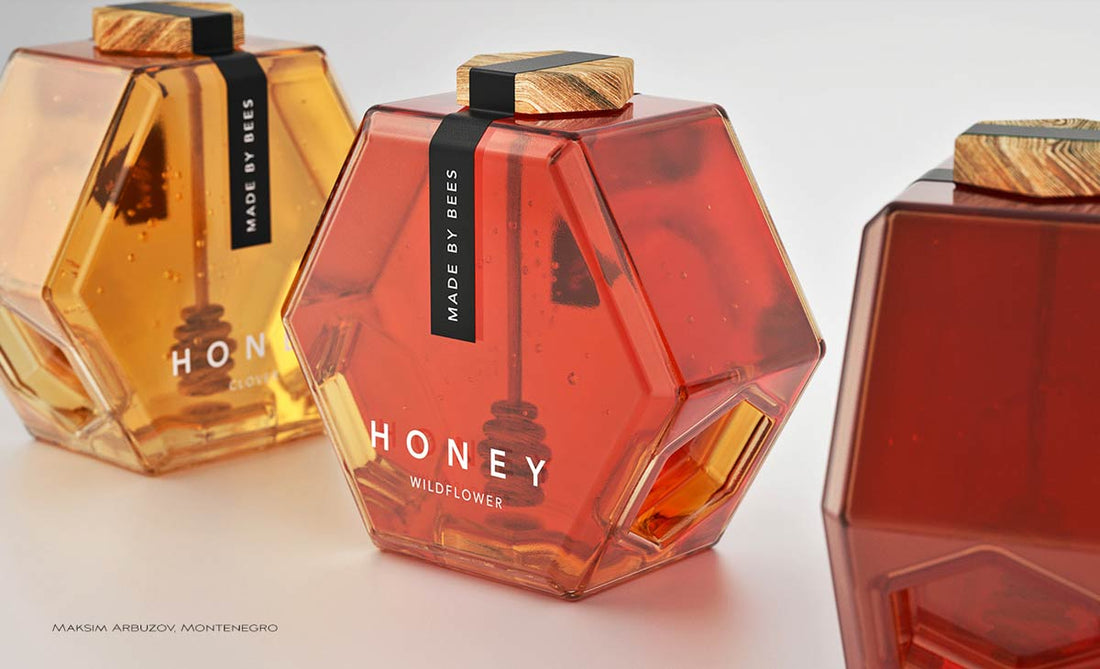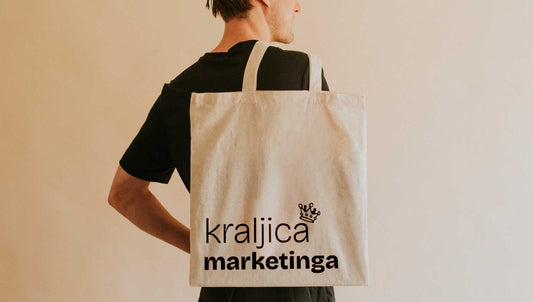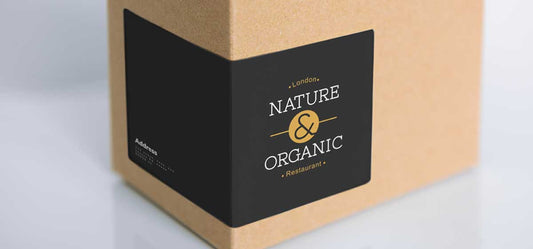
Jar Stickers - The Ultimate Guide
Share
One of the most important packaging for storing food is a multi-purpose tool in the pantry or the cause of crowding in the basement. They are very popular in households at the end of summer and at the beginning of autumn, and in the food industry during most of the year. How did we live without jars?
What are the characteristics of jar stickers ? Why are they specific and who are they necessary for? What is their commercial impact? We answer many such questions, but only with the glass jar in mind, purely out of respect for her majesty.
History
The first glass vessels appeared in Egypt around 3000 BC, produced by a combination of clay molds and pouring liquid clay as protection. By removing the remains of baked clay, glass vessels were obtained from very thin and fragile glass, because the furnaces of that time could not reach high temperatures. It is interesting that the first known manual on glass production dates from the time of the Assyrian king Ashurbanipal, around 650 BC.
The discovery of glassblowing in Syria at the turn of the first millennium marked the beginning of an era that culminated in industrial glassblowing machines in the 20th century, leading to the ubiquitous glass jars of today.
Purpose
In the food industry, glass containers are used to store and transport liquid or semi-liquid products, while in households they serve to preserve grain products, salted fish and meat, and even alcoholic mixtures and liqueurs made according to home recipes.
Glass is a homogeneous, amorphous and isotropic material, and since it is a biologically inactive material, it is extremely useful in the household and we value it highly.
Marking

No jar is well stored if it is not well labeled. We don't need statistics to know that each of us has at least once wondered what is in a jar and what year it is from. Housewives used to recognize each other by the beautifully written labels on the jars.
Today, however, we are talking more about industrial and commercial marking. Contemporary marking encompasses many aspects, only some of which have a historical background.
We now concentrate on the commercial, informational and legal aspects of jar labelling. We suggest you explore the links we have just provided where these topics have already been covered and we will continue to focus on the visual and commercial features of jar labels.
Design and commercial features of jar stickers
Let's consider the jar stickers all through the following 6 aspects:
Psychology
Consumer psychology in the context of jar sticker design includes complex cognitive and emotional processes that influence perception and purchase decision. The concept of "visual hierarchy" plays a key role in how consumers process information on a sticker, directing their attention to the most important elements. The phenomenon of "cognitive fluency" suggests that easy-to-read and visually pleasing stickers are perceived as both more credible and reliable. The principle of "emotional congruence" dictates that the sticker design should be in line with the emotional expectations related to the product. The "availability heuristic" explains why consumers often choose products whose stickers contain easily recognizable and memorable elements. Additionally, the "theory of planned behavior" can be applied in understanding how sticker design influences purchase intention, taking into account consumer attitudes, subjective norms, and perceived behavioral control.
Design
Sticker design represents the first line of communication with potential customers. A successful design balances attention-grabbing and conveying key product information. Typography plays an important role, where the choice of font can suggest tradition, modernity or luxury. The color palette should be coordinated with the contents of the jar, but also stand out on store shelves. Illustrations or photos can quickly convey the essence of a product, while carefully selected graphic elements can reinforce brand identity. Current trends in sticker design include minimalism, retro aesthetics and hand-drawn elements, but it is crucial that the design remains authentic and relevant to the target group.
Functionality
The functionality of the sticker is just as important as its aesthetic aspect. The sticker must remain legible and visually appealing throughout the life of the product, which means it must be resistant to moisture, temperature and manipulation. The choice of materials and printing technology is key to achieving this goal. It is important that the sticker is easily applied to the jar during the production process, but also that it can be removed without leaving traces, which is especially important for reusable jars.

Here we emphasize the use of " banderola ", ie the part of the sticker or separate sticker that covers the edge of the lid and connects it to the jar. It thus represents a guarantee from opening and reinforces the "intact" content.
A well-designed self-adhesive label should allow easy opening of the product without damaging the label, while providing assurance that the product has not been previously opened.
Branding and marketing
In the realm of branding and marketing, jar label design is a critical point of contact in building brand equity (the level of influence a brand name has in the minds of consumers). The concept of "visual branding" emphasizes the importance of consistent application of visual elements that strengthen brand recognition. "Sensory branding" goes a step further, integrating tactile elements into sticker design to create a multisensory product experience. "Storytelling" through sticker design enables the creation of a "brand narrative" that resonates with the target audience, increasing engagement with that brand. Implementation of "neuromarketing" principles in sticker design can optimize visual elements for maximum activation of desired neurological responses in consumers. "Agile marketing" approach in sticker design enables quick iterations and adjustments to market trends, while "personalization" and "mass customization" of stickers can significantly increase "customer lifetime value" (CLV).
Technique and technology
The technical aspects of sticker production significantly affect the final appearance and functionality of the product. The choice of printing method depends on the desired effect, budget and production size. Digital printing offers flexibility for smaller runs and personalization, while offset printing provides high quality for large runs. The material of the sticker must be carefully selected to suit the conditions of storage and use of the product. Paper stickers may be more environmentally friendly, but PVC stickers often offer better protection against moisture. Production costs vary depending on the complexity of the design, the quality of the materials and the printing method, so it is important to find a balance between quality and economy.
Ecology
Environmental aspects of jar sticker design are becoming increasingly important within the broader paradigm of "sustainable branding". The implementation of the principle of "circular economy" in sticker design implies consideration of the entire life cycle of the product, from the source of the material to post-consumer recycling. The sticker's "ecological footprint" can be reduced by applying "lean" production processes and using materials with low "carbon intensity". The nature-inspired concept of "bio-mimetics" can drive innovation in the design of environmentally friendly sticker adhesives and coatings. "Eco-labeling" on stickers, such as "carbon neutral" or "cradle-to-cradle" certificates, communicates the brand's commitment to sustainability. "Green marketing" strategies that emphasize environmental benefits can lead to an "environmental premium" - consumers' willingness to pay more for sustainable products. The integration of "Internet of Things" (IoT) technologies into sticker design can enable monitoring of the environmental impact of a product throughout its life cycle, providing valuable data to further improve sustainability.
Conclusion
As we mentioned, the technology of making glass dates back to before 3000 BC, when the ancient Mesopotamians and Egyptians mastered this skill. Over the millennia, glass vessels have evolved from luxury items to everyday items of use, retaining their essential function of storage and presentation of contents. This long-standing tradition testifies to the durability and practicality of glass as a material.
In contrast, modern jar sticker design is a field that is slowly but constantly evolving, following the latest trends in graphic design, marketing and production technology. Today's sticker designers must balance aesthetics, functionality and sustainability, while communicating brand identity and meeting legal regulations.
This contrast between ancient craftsmanship and modern aesthetics creates a unique synergy. The traditional form of the glass jar serves as a canvas for innovative design expressions, allowing brands to tell their story through visually striking and informative stickers.
In an era of increased environmental awareness, sticker design plays a key role in promoting sustainability. While glass jars in themselves are an environmentally friendly solution due to their ability to be reused and recycled, an innovative sticker design can further highlight these benefits and educate consumers about responsible disposal.
Finally, a successful jar sticker design must respect the rich history of glassmaking while incorporating contemporary marketing strategies and technological innovations. This holistic approach enables the creation of products that not only attract attention on crowded shelves, but also resonate with the values and expectations of modern consumers.
The future of jar sticker design lies in the further integration of digital technologies, personalization and the improvement of sustainability, but always with respect for the centuries-old tradition that glass jars represent. This blend of old and new, tradition and innovation, is the key to creating products that will be relevant, functional and attractive for years to come.




